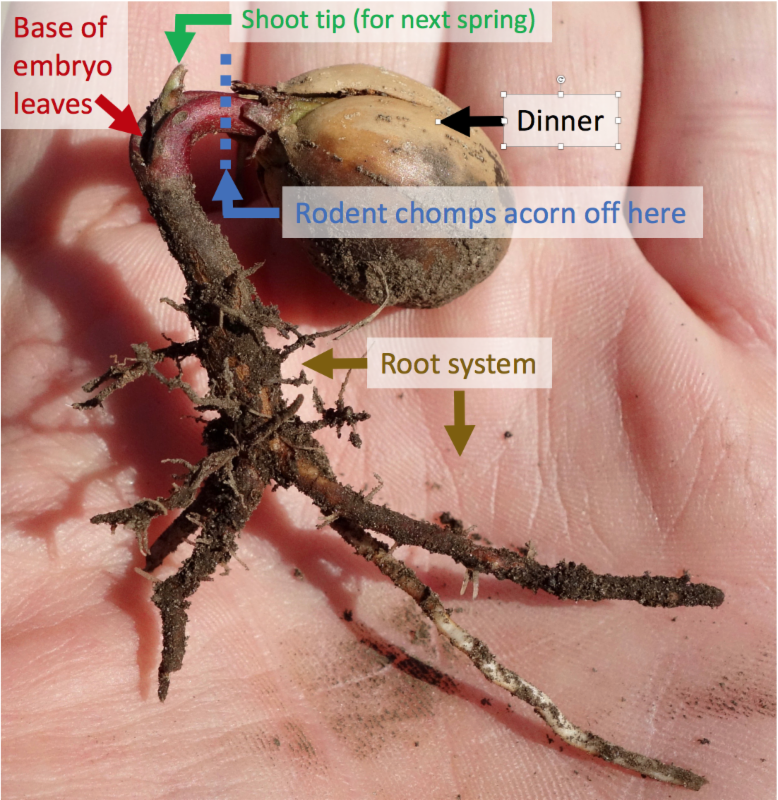Two weeks ago, I wondered why the acorns of mountain chestnut oak (Quercus montana), like most other species in the white oak section of the genus, germinate soon after hitting the ground in the fall. This week, I excavated a seedling, and as you can see, the root system is already well developed, although the shoot system will not emerge until next spring. This pattern of fall establishment of a root system is most unusual among temperate trees, where the norm is for a seed is to remain entirely dormant until spring, when environmental signals call forth the first root (the radicle) and almost immediately thereafter, the seedling shoot.
What might be the benefits of such a seed germination strategy? Rodents (e.g. squirrels) typically cache (hide and bury) acorns such as the mountain chestnut oak. Between the time of caching and a squirrel’s subsequent return to eat the hidden acorn, the seed will germinate and put down its inedible (to the squirrel) roots. Rodents must then sever the rather succulent body of the acorn from the firmly implanted root, if dinner is wanted.

Importantly, in the mountain chestnut oak, not only does the root system get pushed out of the body of the acorn in the fall, so does the future shoot tip—a consequence of the base of the seedling leaves (cotyledons) elongating and being pushed out of the acorn body too (see labeled image). Thus, after the squirrel has excised the body of the acorn, the root system left behind often has the growing tip of the shoot system attached at the top, and the seedling can grow and prosper in the spring (even without the benefit of the food reserves still in the acorn proper that the squirrel has consumed). Interestingly, this suggests that much of the investment in the food reserves of an acorn (at least in the mountain chestnut oak and other species of white oaks) may be important as a food reward for the animals that disperse the acorns, rather than simply serving as food for the young embryo and seedling.
